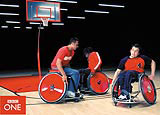Switching on to branding
Consistent branding can help TV channels to entice viewers to tune in and keep them turned on, according to Brandon Cheevers and Richard Clayton

In living rooms across the country, TV idents are almost part of the furniture. By now, viewers of BBC1 will be as familiar with the images of tap dancers, acrobats and festival crowds which the channel introduced in March, as they are with their favourite armchair.
Once little more than a way of announcing ‘we are broadcasting to you’, idents now persuade channel-hopping viewers to ‘please watch us’. This multichannel universe has led to a spate of identity reviews, with brands competing to tap into the public’s consciousness.
Channel 5’s decision to revamp its identity, courtesy of design consultancy Spin, is the most recent example of a broadcaster overhauling its image (DW 20 June). Prompted by the need to reflect the ‘growing maturity’ of the channel’s content, as opposed to its launch scheduling of football, films and soft pornography, it follows an earlier refreshment by Kemistry two years ago (DW 25 August 2000).
Ditching its five-year-old ‘balloon’ logo, BBC1 is attempting to change perceptions of the channel as ‘aloof’ and get closer to the reality of modern Britain, instead of floating serenely above it. The new idents, created by Lambie-Nairn (also responsible for the balloon), feature young, black and disabled people performing a variety of dance routines.
Communicating to an audience on an emotional level is one of the key objectives of designing idents, says BBC MediaArc creative director Jane Walker, who has worked on branding projects for BBC Home Choice and BBC Broadcast.
‘You need to talk to individuals and not just market segments. The idea of demographics is a bit old hat. You must communicate with real people and find out what they like and what they don’t,’ she says.
Idents need to make immediate impact with viewers and help channels hang on to them. Walker feels the BBC1 work does this, but would like to have seen the design go further.
‘The underlying concept is good. It works on an emotional level, but I would like to see some more emotional intensity, perhaps by getting closer shots,’ she says.
Does attempting to generate loyalty through a quirkier approach run the risk of alienating some of the viewers while attracting others though?
‘Very possibly,’ concedes Lambie-Nairn creative director Martin Lambie-Nairn. ‘Whenever you make any change it is a risk and you can’t actually measure the reaction.’
But, he says, the BBC’s brand has shifted in recent years, away from ‘being seen as Auntie’ towards an inclusive image that is ‘more comfortable’ for people who usually watch Sky and ITV[1].
‘We think dance is the ultimate democracy,’ says Lambie-Nairn of the current BBC1 idents. ‘We have built up the energy, made it lighter and more fun. Ultimately, we want people to reconsider BBC1.’
Kemistry creative director Graham McCallum says broadcasters fall short with branding when they don’t recognise their programmes as an inherent component of the identity.
‘People watch a channel because they like the programmes on it. Channels should see programmes as part of their brand and put their stamp on [them]. This can be done within a design framework,’ he adds.
Lambie-Nairn agrees. He believes major broadcasters have learnt from niche channels that programme content goes ‘hand in glove’ with the overall brand. ‘The brand is everything, and that includes the programmes. Branding is not about design, it’s about strategy. The design must say to viewers “I’m your kind of channel”,’ he says.
Applying a brand consistently is essential, says Walker. But for this to happen broadcasters must adopt a more co-ordinated approach to the commissioning of design.
‘Sometimes you have different people responsible for different parts of the message. Everyone needs to have a clear idea of how to glue all the work together. What you see on the website, the posters and on TV needs to be consistent,’ she says.
Lambie-Nairn thinks the real challenge in designing for broadcasters lies in making yourself heard in the boardroom.
‘It’s a relationship thing. You need to work with the people who are calling the shots. If you can’t work with the board, the design will be judged as something that looks nice rather than as a commercial asset.
‘And you have to [understand] the production side because if the identity doesn’t work from a technical point of view, your mistakes will end up costing a lot of money,’ he says.
Earlier this month, ITV announced plans to replace its regional identities with a single brand. The network is desperate to regain the ratings lead over BBC1 and reverse the fall in its advertising revenues. ‘It’s not making enough money to invest in programmes, which is not a good basis for brave creative work,’ comments Lambie-Nairn.
But a new head of marketing, Jim Hytner, recruited from Channel 5 could halt this ‘frightening spiral’, he says.
Lambie-Nairn adds, ‘Branding takes a long time to get into [people’s] consciousness, but, once there, it helps a channel stand out. It’s something it can control and drive. [Idents] make a statement about the channel every half hour and that makes a difference.’
-
Post a comment



